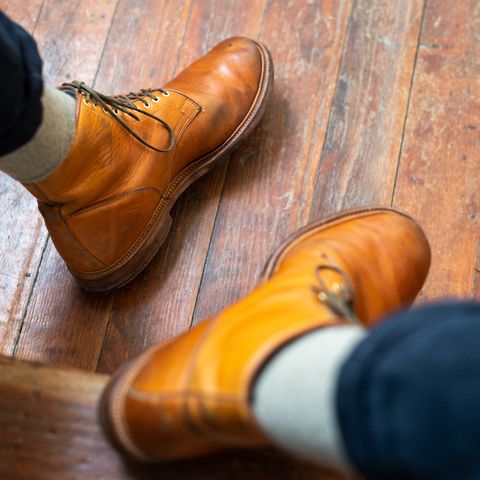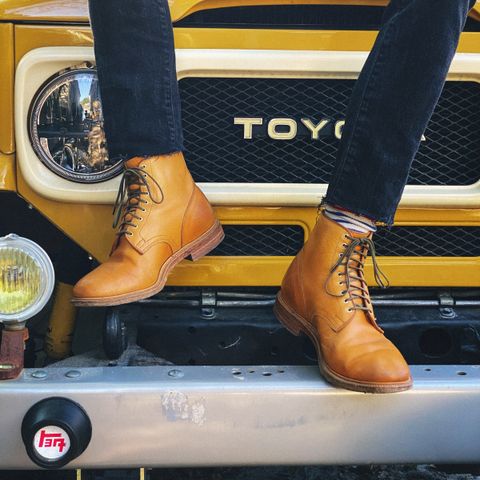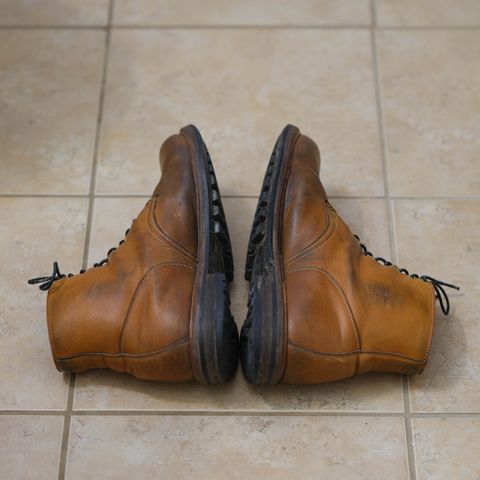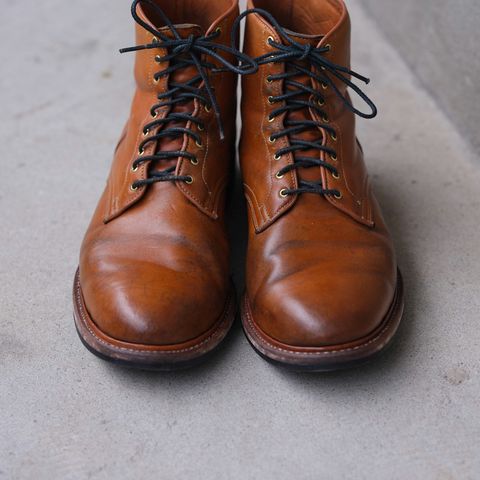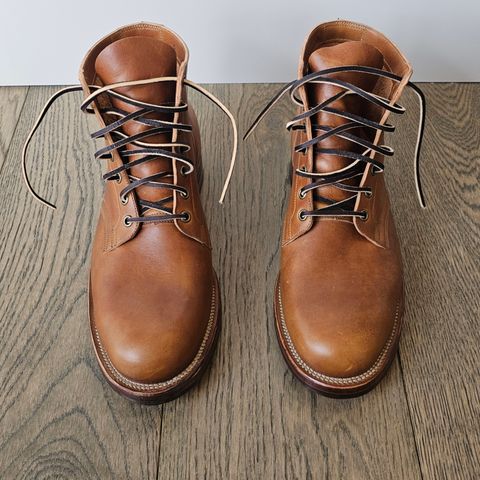About
Shinki Camel Latigo Horsehide is a vegetable-tanned horsehide leather produced by Shinki Hikaku, the only tannery in the world specializing exclusively in horse leather. Distinguished by its warm camel coloring that displays shades of orange, tan, and gold, this leather represents a specialized variant of Shinki Latigo Horsehide known for its soft, supple hand and distinctive aging characteristics. The leather undergoes a four-month tanning and aging process at Shinki Hikaku's facility in Himeji, Japan, resulting in a full-grain material that develops rich patina through wear.
About
Shinki Camel Latigo Horsehide is a vegetable-tanned horsehide leather produced by Shinki Hikaku, the only tannery in the world specializing exclusively in horse leather. Distinguished by its warm camel coloring that displays shades of orange, tan, and gold, this leather represents a specialized variant of Shinki Latigo Horsehide known for its soft, supple hand and distinctive aging characteristics. The leather undergoes a four-month tanning and aging process at Shinki Hikaku's facility in Himeji, Japan, resulting in a full-grain material that develops rich patina through wear.
Characteristics
Appearance
Shinki Camel Latigo Horsehide features a bright appearance with notable color depth. The camel coloring contains multiple tonal variations, with different areas of a hide showing shades of orange, tan, and gold. The leather displays subtle but noticeable grain patterns that contribute to its visual character. The surface exhibits a polished luster without excessive waxiness, allowing the natural characteristics of the horsehide to remain visible.
Physical Properties
The leather presents a soft and supple hand feel despite being classified as extra heavyweight, full-grain horsehide. It demonstrates malleability and flexibility uncommon in heavyweight horsehide materials, though it maintains low stretch compared to cowhide of equivalent weight. The combination of vegetable tanning and extensive oil infusion during production creates a material that transitions from initial firmness to supple softness relatively quickly with wear. The leather exhibits resistance to moisture and sweat due to its high oil content, while maintaining the structural integrity expected of horsehide.
Aging and Patina
Shinki Camel Latigo Horsehide develops distinctive aging characteristics through use. The leather produces beautiful creasing patterns at flex points, with these areas showing accelerated color development. General wear and sun exposure cause the leather to darken, with worn areas developing richer, deeper tones of brown. Rather than maintaining the bright camel color, the leather tends toward darker variations as it ages, though the underlying warmth of the original color remains evident in less-worn areas. The high oil content contributes to the development of a lustrous patina that highlights the natural grain structure.
Production
Tannery and History
Shinki Hikaku established operations in 1951 in Himeji, Hyogo Prefecture, Japan, as a family-run tannery. The company maintains its distinction as the only tannery globally to specialize exclusively in horse leather production. This singular focus on horsehide has shaped the tannery's methods and expertise over seven decades of operation.
Tanning Process
The production of Shinki Camel Latigo Horsehide follows a time-intensive vegetable tanning process. After initial preparation including washing, dehairing, and fat removal, the hides undergo an extended bath in pit vats containing mimosa tannin extracted from acacia bark. This purely vegetal tanning process uses no chemical additives. The tanning duration varies by hide section, with rump sections requiring approximately one month and body sections requiring roughly two weeks of immersion.
Following tanning, the leather enters extensive drying and aging stages that extend up to four months. During this period, the material develops its characteristic texture and grain. The leather receives treatment with oils and waxes through techniques including hot-stuffing, wet-stuffing, and fat liquoring, which increase the amount of oil the hide retains. This oil infusion contributes to the leather's suppleness, moisture resistance, and aging characteristics. The tannery maintains a full-grain, uncorrected finish on all horsehide production, preserving the natural characteristics of each hide.
Sourcing and Availability
Shinki Camel Latigo Horsehide presents sourcing challenges due to limited production capacity and high demand. The leather's heavyweight classification and the tannery's traditional methods result in constrained output. Manufacturers seeking to acquire this leather have reported waiting periods of a year or more to secure allocations. The difficulty in sourcing reflects both the specialized nature of horse leather production and Shinki Hikaku's small-scale, artisanal approach to tanning.
Applications
Shinki Camel Latigo Horsehide appears primarily in footwear applications, particularly in high-end work boots and dress shoes. The leather's combination of durability and flexibility makes it suitable for boot construction using stitchdown, Goodyear welt, and other traditional methods. Manufacturers have produced service boots, derby shoes, and slippers using this material. The leather's substantial weight and low stretch characteristics also make it appropriate for belt and strap applications, though its use in these products receives less prominence than its footwear applications.
The camel color variant appeals particularly to consumers interested in visible patina development, as the warm tones and color depth provide an attractive base for aging. Products made from this leather typically occupy premium price points reflecting both the material's quality and its scarcity.
References
Viberg. "Service Boot Horsehide Latigo". Viberg Journal.
Viberg. "Shinki Hikaku Tannery". Viberg Journal.
Withered Fig. "Viberg Derby Shoe - Shinki Camel Latigo Horsehide on Lactae Hevea Sole". The Shade. June 2021.
Himel Bros. "Shinki Tannery—The Best Leather for Horsehide Jackets". Himel Bros Leather.
BestLeather.org. "What Is Latigo Leather?". BestLeather.org.

